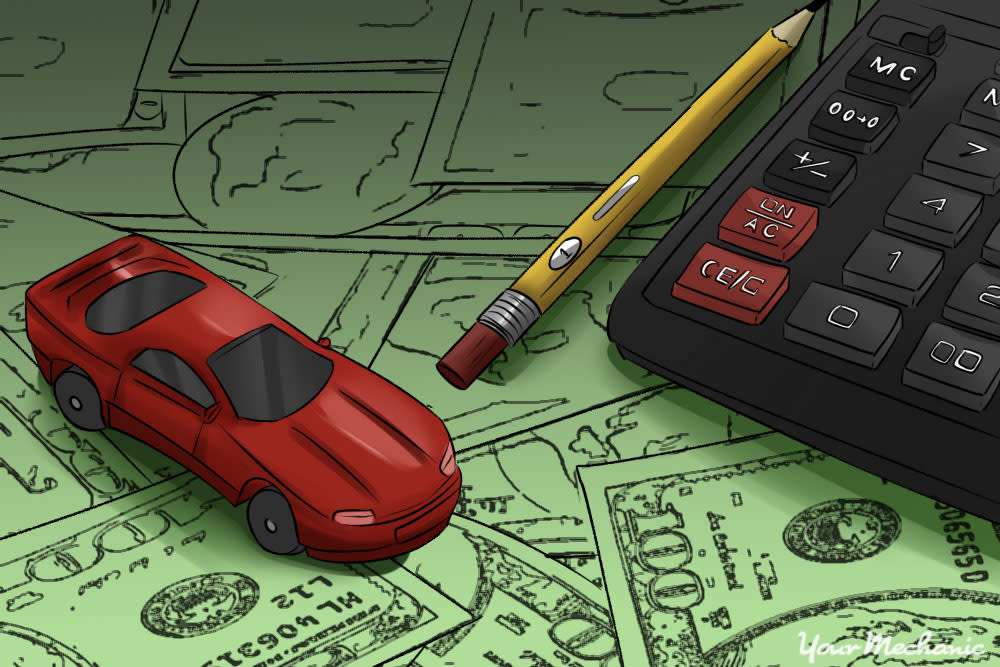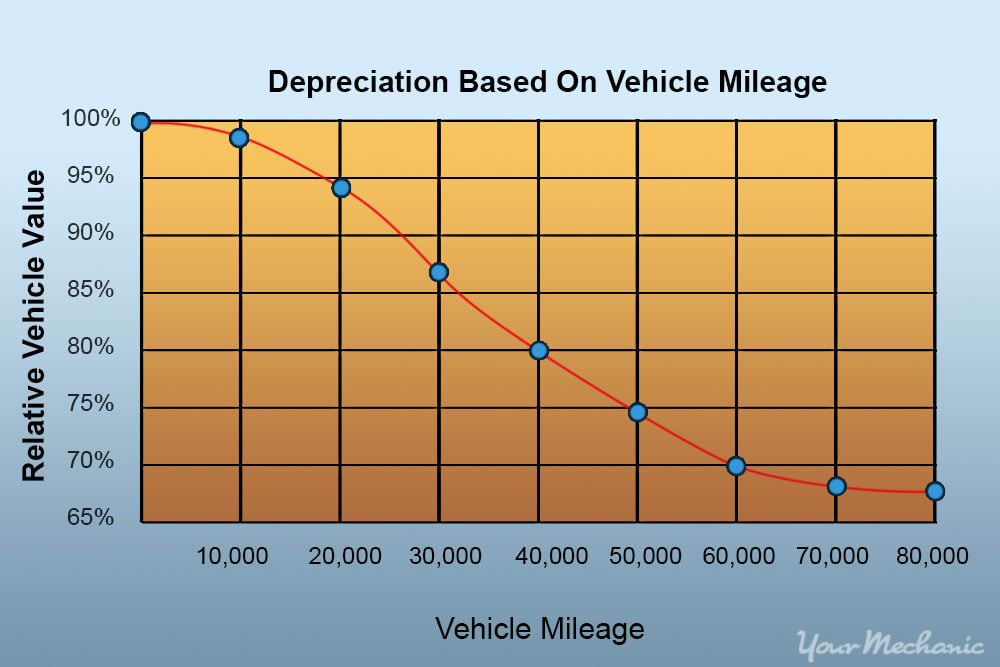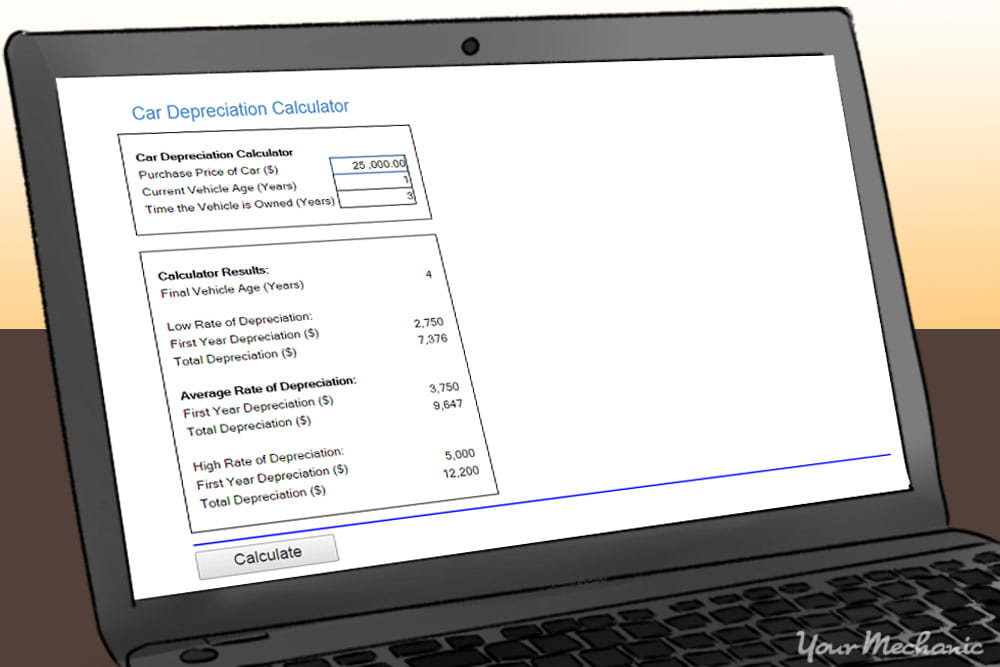

Leasing a car can be an intimidating endeavor, especially if someone is leasing for the first time. For most people, the monthly lease payment will be a crucial factor and knowing how to calculate that number is key for making a good decision about leasing a new or used vehicle.
There are four main components you’ll need to know in order to calculate what your monthly lease payment will be:
- Depreciation
- Interest
- Tax
- Total
Each one of these components of calculating a lease payment is essential and will provide you with enough information to make an educated decision about entering into a lease agreement.
Component 1 of 4: Depreciation
Depreciation of a car’s worth is inevitable, and car dealers will take the depreciation value of a car into consideration when setting up a lease. For example, a car might be worth $15,000 brand new, but after it has been leased for three years, its value will be $10,000. This means the car’s worth has depreciated $5,000, and this projected depreciation value will be factored into the monthly lease payment.
Mileage plays a big role in vehicle depreciation. The farther you drive, the less your car is worth.
Tip: Cars with fewer options typically depreciate much faster than cars loaded with options. Most cars depreciate around 15% to 25% per year, and after the first five years, a car can lose around 60% of its original value.
In order to find out what the depreciation cost will be requires an easy calculation: (Capitalized Cost – Residual value) / Term of Lease.
Step 1: Capitalized cost. Capitalized Cost is the amount of money that is being financed. It includes the price of the vehicle after negotiating down from the sticker price (MSRP) of the car, as well as any reductions from down payments, trade-in credits, or rebates.
Step 2: Length of lease. The length of most leases falls into the ballpark of three to five years, which is known as the Term of the lease.
Step 3: Residual value. Residual Value of a car is what it’ll be worth at the end of the lease. Typically, a dealer will provide you with the residual value or give you a residual percentage which you multiple against the sticker price of the car.
To make things simple, let’s say the sticker price was $30,000, but after a $4,000 trade-in and $1,000 down payment, the capitalized cost is $25,000.
Next, the length of the lease will be three years (36 months).
The projected residual value of the car in three years is $15,000. In this example, the residual percentage would be 60%. You would determine the residual value by multiplying the capitalized cost ($25,000) with 60%, which would give you the projected value of $15,000.
Depreciation Cost: $25,000
Residual Value: $15,000
Term: 36 months
If we use the depreciation cost equation mentioned above, we can calculate our depreciation cost:
($25,000 – $15,000) / 36 = $277.77
- Tip: Remember, your monthly lease payment is largely determined by the depreciation value of your car. A car that depreciates at a slower rate will typically cost less per month to lease, so focusing on the depreciation value rather than the sticker price of the car will help you make a smarter choice.
- Tip: There are plenty of handy online depreciation calculators online to help you estimate your car’s current value, such as Money-zine.
Component 2 of 4: Interest
Interest rates can drastically alter the monthly fee of leasing a car. The higher the interest rate, the more you’ll owe each month, so it’s important to take tax rates into consideration when leasing a car.
Car dealers will use something called the money factor to determine how much interest you’ll pay monthly. This is an important value that should be taken into account when calculating your monthly lease payment and it should be added to the total of the depreciation value.
Although it seems confusing, car dealers will add the Capitalized Cost and the Residual Value together before calculating the amount of interest owed per month. The equation they use is: (Capitalized Cost + Residual Value) x money factor.
Money factor can be determined in one of two ways:
Step 1: Using interest rate. If the dealer is using an interest rate, the money factor can be determined by simply dividing the interest rate by 2,400.
Example: 4% interest rate / 2400 = .00166 money factor.
- Tip: The interest rate on your lease is the amount of money charged in interest on the lease. You can get the interest rate by calling the dealer ahead of time or checking with your credit union.
Step 2: Using lease charge. If the dealer uses a “lease charge” instead of an interest rate, the money factor can be determined by using the following equation: Lease Charge / [(Capitalized cost + Residual value) x term of lease] = money factor
Example: $4,000 / [($25,000 + $15,000) x 36] = .00277 money factor
Once you’ve determined the money factor, you can plug it into the equation to determine your monthly costs in interest (we’re using the values from the above example of a 4% interest rate).
Depreciation Cost: $25,000
Residual Value: $15,000
Money Factor: 0.00166
($25,000 + $15,000) x .00166 = $66.40
This amount, $66.40, is the monthly interest payment that should be added to the total cost of the lease payment.
Component 3 of 4: Tax
Taxes are an easy cost to overlook when determining your monthly lease payment, but it’s important to calculate how much you’ll owe in taxes each month to ensure you understand how much you’ll actually be paying in total.
What many people don’t realize is that taxes are usually charged on both the depreciation cost and interest amounts. You can look up your state’s sale tax here.
To determine your tax payment, use the following equation: (Depreciation Cost + Interest) x Sales Tax = Monthly Tax Amount
Depreciation Cost: $277.77
Interest: $66.40
Tax: %7
($277.77 + $66.40) x .07 = $24.09 Monthly Tax
Note: Different states have different local sales tax amounts, so be sure to check the sales tax percentage for your state. Also, some states collect sales tax when the lease is started, in which case, no monthly sales tax is charged.
Component 4 of 4: Total
After determining the value of the depreciation cost, interest, and tax amount, you are ready to calculate the total monthly lease payment. Simply add the values together and the total will be what you will owe each month.
Depreciation Cost: $277.77
Interest: $66.40
Tax: $24.09
$277.77 + $66.40 + $24.09 = $368.26 Total Monthly Lease Payment
Once you’ve done your research and gathered the appropriate values, calculating your future lease payment will help you find a lease that suits your budget.





